Earth pressure acting on L-shaped walls
Prof. Dr.-Ing. Martin Achmus
Introduction
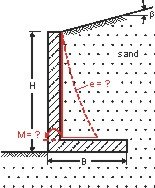


According to current German regulations, in the design of the vertical stem of an L-shaped wall increased earth pressure, i.e. the average of active earth pressure and earth pressure at rest, has to be applied. This approach is very conservative in many cases. Due to the existence of the horizontal stem increased earth pressure is to be expected in the lower part of the wall, but this must not be valid for the upper part.



Using a numerical model, the earth pressure distribution can be calculated. The finite element mesh used is for an example given in Fig. 2. A very fine mesh was chosen in order to obtain a fine solution of the pressure distribution. In Fig. 2 the areas with the largest strain increments are highlighted. The development of two sliding surfaces beginning at the end of the horizontal stem can be clearly seen. In the numerical calculation, at first an initial stress state was generated in the subsoil. Then the construction of the wall and the backfilling was simulated successively. For the latter, an application in layers of 1 m thickness was considered. Results are shown in Fig. 3. Regarding the design, a linear increase of the earth pressure with depth can be assumed as an approximation. The magnitude of the resultant earth pressure force can be described by the average earth pressure coefficient k according to equation 1.
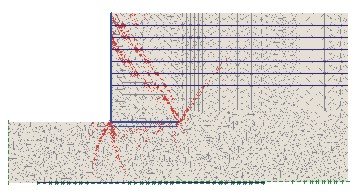


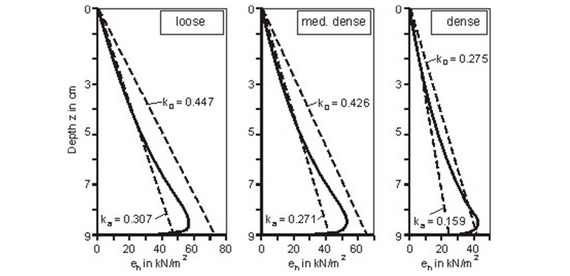
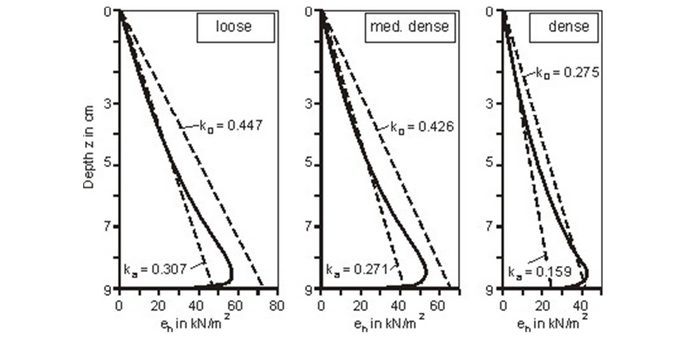
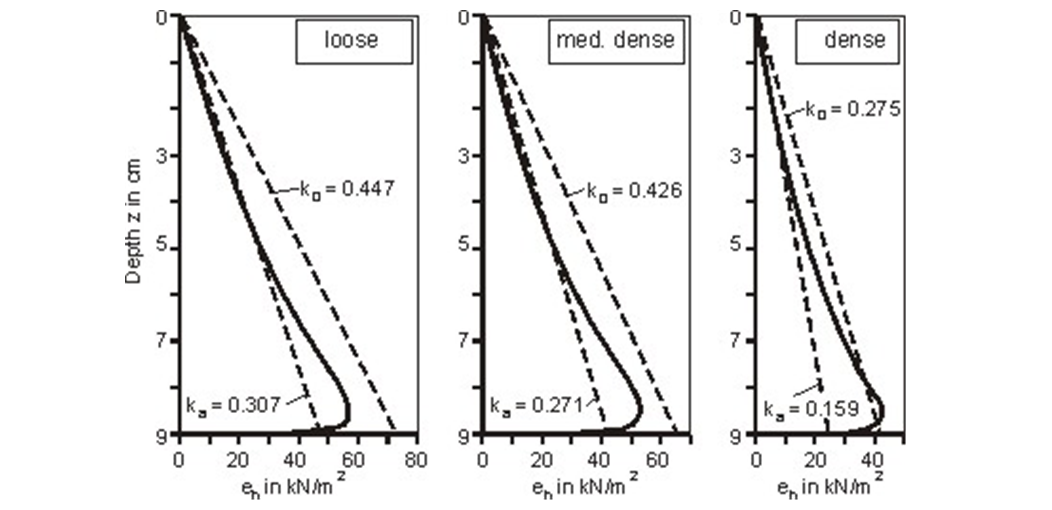
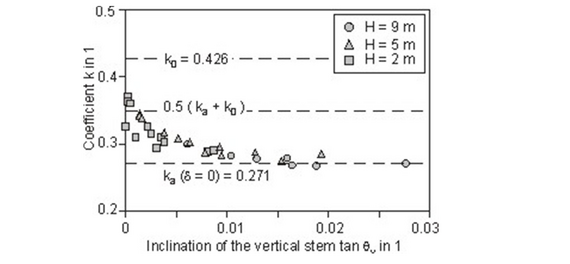
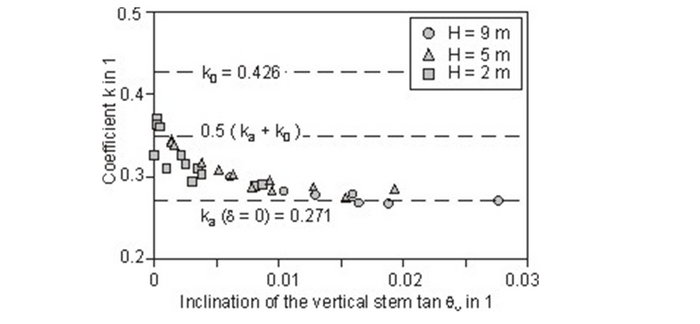
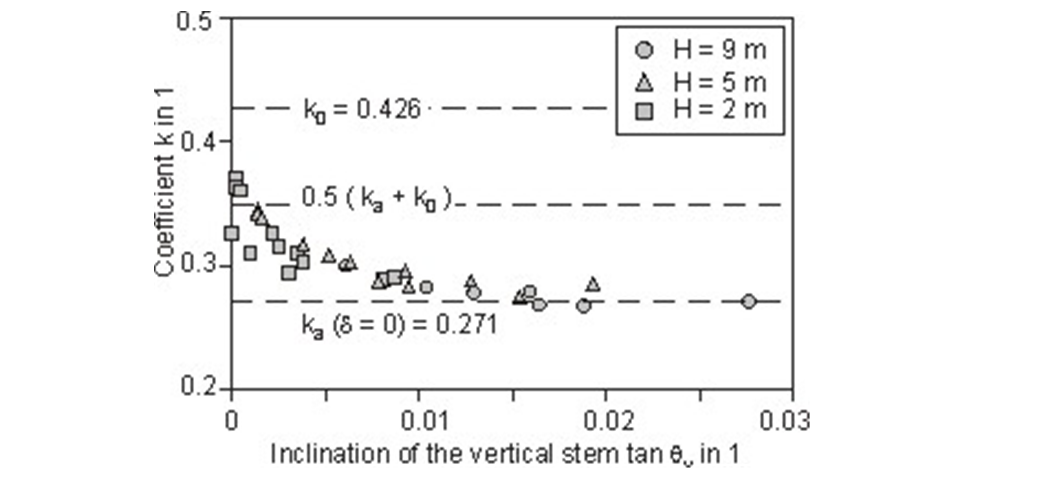
In the scope of a parametric study the effects of wall height, width of the horizontal stem, wall stiffness and subsoil stiffness were investigated. It was found that the magnitude of the earth pressure coefficient is mainly dependent on the subsoil stiffness, because the wall settlements and with that the rotation of the wall are dependent on it. Additionally, the deformation of the vertical stem due to bending influences the earth pressure coefficient. Both effects (rigid body rotation and bending deformation) affect the resultant inclination θv of the vertical wall stem, which thus can be used as an integral measure for these effects (equation 2).
With that, a simple way to a more exact determination of the earth pressure acting on the vertical wall stem was proposed as follows:
- Determination of the settlements and the rotation of the wall by an usual settlement calculation assuming a substitute gravity wall loaded by active earth pressure.
- Calculation of the bending deformation of the vertical stem. Herein also active earth pressure can be applied for the sake of simplicity.
- Choice of an earth pressure coefficient dependent on the resultant average wall inclination obtained. With this coefficient and assuming a linear earth pressure increase the vertical wall stem can be designed.
The calculated connection of k and the average inclination θv shown in Fig. 4 needs experimental verification. However, with the approach presented a suitable and practicable way for a more sophisticated determination of the earth pressure acting on the vertical stem of L-shaped walls is outlined
Publications
[1] Achmus, M., Rouili, A. (2004). Untersuchung zur Erddruckbeanspruchung von Winkelstützwänden. Bautechnik Heft 12, Dezember 2004, 81. Jg., S. 942-948.
[2] Achmus, M. (2006). Numerical modelling on earth pressure loading of the vertical stem of L-shaped retaining walls. 6th European Conference on Numerical Methods in Geotechnical Engineering, Graz, Sept. 2006.














